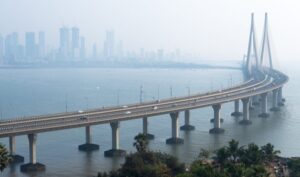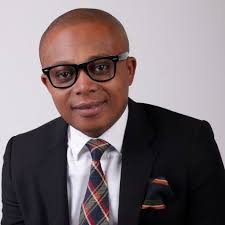Mumbai is one of the major cosmopolitan cities in India which is primarily famous for large markets, mesmerising beaches, towering buildings, and exquisite five-star hotels. Formerly called Bombay, it is a densely populated city on India’s west coast with a deep natural harbour.
The city’s official name change to Mumbai from Bombay happened when regional political party Shiv Sena came into power in 1995. The Shiv Sena saw Bombay as a legacy of British colonialism and wanted the city’s name to reflect its Maratha heritage, hence, renaming it to pay tribute to the goddess Mumbadevi.
Known as a financial centre, Mumbai is India’s second largest city by population and also famous as the heart of the Bollywood film industry. In 2008, Mumbai, which also is the wealthiest city in India, with the highest number of millionaires and billionaires across India, was named an alpha world city.
Until the 1970s, Mumbai owed its prosperity largely to textile mills and the seaport, but the local economy has since then diversified to include finance, engineering, diamond-polishing, healthcare and information technology.
The key sectors contributing to the city’s economy are finance, gems & jewellery, leather processing, information technology and communication, textiles, petrochemical, electronics manufacturing, automobiles and entertainment.

A week ago, I was part of a team from the Ghana Export-Import Bank (GEXIM) to participate in a one-week study tour to the Export-Import Bank of India, the country’s specialised export credit agency responsible for international trade in India’s economic development agenda.
On our arrival in Mumbai, we checked into the famous President, Mumbai – IHCL SeleQtions, which is strategically located close to majority of the major tourist attractions and the Central Business District with proximity to several government offices, corporate businesses, parks, financial institutions, etc.
The President, Mumbai – IHCL SeleQtions is a hotel that combines a world-class service and a buzzing social calendar and also houses three award-winning restaurants, featuring an array of cuisines from across the globe, a stylish lounge bar, a pet-friendly bistro, and a lifestyle gourmet store – making the neighbourhood hotel a true urban oasis.
Apart from the dominance of financial institutions in Mumbai, the city is also famous for tourism. Mumbai offers a variety of natural heritage and modern entertainment including leisure spots, beaches, cinemas, studios, holy places, amusement parks, historical monuments and UNESCO tourist attractions.

Mumbai, the capital city of Maharashtra, is called the ‘city of dreams’ or ‘Mayanagri’. It has gained this epithet over the years not just because it offers limitless opportunities for the Indian citizens across the states, but also for people across the borders.
Marathi is the official working and administrative language along with English. Mumbai has a large polyglot population like all other metropolitan cities of India. Sixteen major languages of India are spoken in Mumbai, with the most common being Marathi and its dialect East Indian.
Economic hub of India
Mumbai isn’t just the wealthiest city in the country, but is also among the wealthiest globally. It is where the headquarters of multiple financial institutions are located – from the Bombay Stock Exchange, Reserve Bank of India, National Stock Exchange, and the Mint to Indian business giants such as the Tata Group, Aditya Birla Group, Essel Group and Reliance Industries.
Attractive to migrants
As the commercial capital of the country, Mumbai has much appeal to anyone in search of work and better career prospects. Migrants from every part of the country move to the city every day in search of a better life, hence, the name ‘City of Dreams’ was coined. In spite of its many slums and alarming extremes in wealth distribution, it is seen as a city that will reward anyone who is willing to work hard.
Bollywood
Bollywood, India’s largest and one of the world’s largest film industries, is synonymous with Mumbai. The city has accordingly established itself as the film capital of India. It is where many Bollywood storylines are based, where top studios are located and where the most famous directors, producers, actors and crew members live. And so, to the rest of India the charm and appeal of Bollywood holds true for Mumbai as well.
Architecture
From the stunning Bandra-Worli Sea link to the pristine white Haji Ali Dargah, Mumbai’s architecture is complex, rich and exceptional. Marine Drive, whose lights form an arc resembling a string of pearls dubbed as Queen’s Necklace, and the Chhatrapati Shivaji Terminus whose Victorian architecture has resiliently stood through more than a century of events from terror attacks to freedom struggles – are all symbolic of Mumbai’s charm to the rest of the subcontinent.
Past and future
Mumbai’s dream-like quality has as much to do with its rich past as it has with its promising future. While the city’s global importance and position grows by the day as India re-positions its economy globally, it was a hub of civilisation and exchange with other great civilisations even 2000 years ago.
The stunning Kanheri Caves and Elephanta Caves are remnants of a rich past where Mumbai fared as a commercial and ideological hotspot. Even Mumbai’s journey from a scattered group of seven historic islands to its current form is nothing short of dream-like for onlookers from elsewhere in the country.











